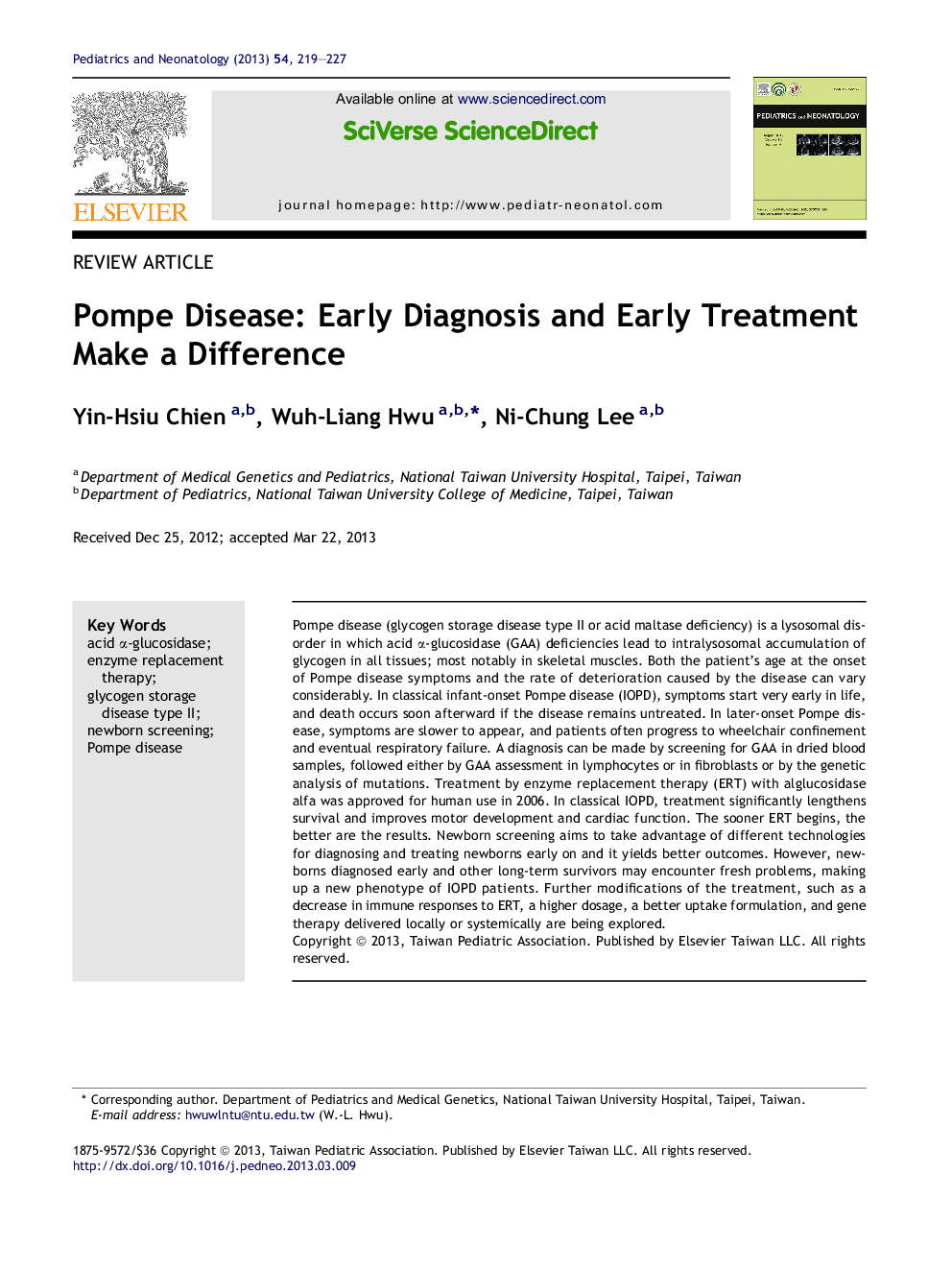| کد مقاله | کد نشریه | سال انتشار | مقاله انگلیسی | نسخه تمام متن |
|---|---|---|---|---|
| 4175131 | 1276172 | 2013 | 9 صفحه PDF | دانلود رایگان |

Pompe disease (glycogen storage disease type II or acid maltase deficiency) is a lysosomal disorder in which acid α-glucosidase (GAA) deficiencies lead to intralysosomal accumulation of glycogen in all tissues; most notably in skeletal muscles. Both the patient's age at the onset of Pompe disease symptoms and the rate of deterioration caused by the disease can vary considerably. In classical infant-onset Pompe disease (IOPD), symptoms start very early in life, and death occurs soon afterward if the disease remains untreated. In later-onset Pompe disease, symptoms are slower to appear, and patients often progress to wheelchair confinement and eventual respiratory failure. A diagnosis can be made by screening for GAA in dried blood samples, followed either by GAA assessment in lymphocytes or in fibroblasts or by the genetic analysis of mutations. Treatment by enzyme replacement therapy (ERT) with alglucosidase alfa was approved for human use in 2006. In classical IOPD, treatment significantly lengthens survival and improves motor development and cardiac function. The sooner ERT begins, the better are the results. Newborn screening aims to take advantage of different technologies for diagnosing and treating newborns early on and it yields better outcomes. However, newborns diagnosed early and other long-term survivors may encounter fresh problems, making up a new phenotype of IOPD patients. Further modifications of the treatment, such as a decrease in immune responses to ERT, a higher dosage, a better uptake formulation, and gene therapy delivered locally or systemically are being explored.
Journal: Pediatrics & Neonatology - Volume 54, Issue 4, August 2013, Pages 219–227